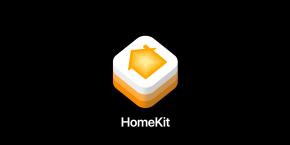

The iDevices Socket is an adapter that goes between your lighting fixture and a standard bulb to add Wi-Fi and iPhone app control to any lightbulb. It also adds support for control via Siri voice commands and the iOS 10 Home app through Apple’s HomeKit platform.
Installing Socket |
Installing the product only takes a few minutes. You screw it into your lighting fixture as you would a lightbulb, then screw your lightbulb into the iDevices Socket.
There’s a button on the side of the Socket to turn it on and off manually without having to use your iPhone or iPad, which is something you don’t get with a lot of other connected-bulbs. The company says the device works with “all standard bulb types up to 60W including halogen, incandescent, and compact fluorescent (CFL) bulbs.”

Once screwed in, the companion iOS app called “iDevices Connected” runs you through a quick setup to connect to your Wi-Fi network and give your Socket and its built-in night light a nickname (I chose “desk lamp” and “night light”).

Using Socket |
After you’re connected, the app will let you switch your bulb on and off and adjust its brightness if your bulb supports dimming. The Socket also has a built-in LED night light that acts independent of your connected bulb (pictured around the base of the bulb in purple above).
It appears as a separate accessory within the app and HomeKit, and you can adjust the color and brightness of the night light or optionally disable it from within the app. The manual switch on the Socket doesn’t affect the night light at all.

With HomeKit support, the app lets you see and set up Scenes, Rooms, Zones, Apple’s features for grouping together accessories for organization and to control multiple actions with a single command.
And with iOS 10 this fall (currently in beta), you’ll be able to see the same functions from within Apple’s new Home app, which acts as a central location for viewing and controlling all of your HomeKit accessories. HomeKit support also means you can control the Socket with Siri voice commands:

The app also just gained support for controlling your accessories with voice commands via Amazon Alexa hardware.
It’s a slightly different and more costly approach to making your lightbulbs “smart” compared to what has become somewhat of an industry standard. Most connected lightbulb systems available, like the popular Philips Hue platform, utilize a Wi-Fi bridge or hub that connects to multiple lightbulbs and your network. You start with a hub and a couple of bulbs for about $100, and you can expand by purchasing individual or packs of supported bulbs from there (for around $30-$40 for a 2-3 pack for the Hue). But you’re limited to bulbs that support the platform…
Floodlights, spotlights, or vintage and decorative Edison-style bulbs are a few examples of traditional bulbs you might want to add iPhone-control and HomeKit support to using Socket. It’s a decent alternative to the Philips Hue style approach if you want to control a small number of lighting fixtures, or for those that use speciality bulbs that they can’t get with a platform like Hue that’s tied to proprietary bulbs. The relatively chunky Socket, however, doesn’t exactly enhance the look of your bulbs if you’re using an exposed, decorative bulb like an Edison-bulb.

The iDevices Socket only adds smart functionality to a single bulb that you supply, but it lets you use any standard lightbulb of your choice. Each Socket will cost you $79…
Should you buy it?
It would be a lot easier to recommend the Socket if it were less expensive. At $80, you can currently get a Philips Hue kit with a bridge and two bulbs for the same price. Plus with the iDevices Socket you have to bring your own bulbs, but that’s actually the one reason why the product might appeal to some as noted above.
If you want to add HomeKit control to a single lamp, spotlight, or other lighting fixture with a bulb of your choice, Socket is one of the more feature-filled options. An alternative would be an outlet with HomeKit support like the iHome SmartPlug (our review) or the iDevices Switch, giving you on and off support on single device for around half the price.
Get the iDevices Socket for $79.
FTC: We use income earning auto affiliate links. More.





Comments